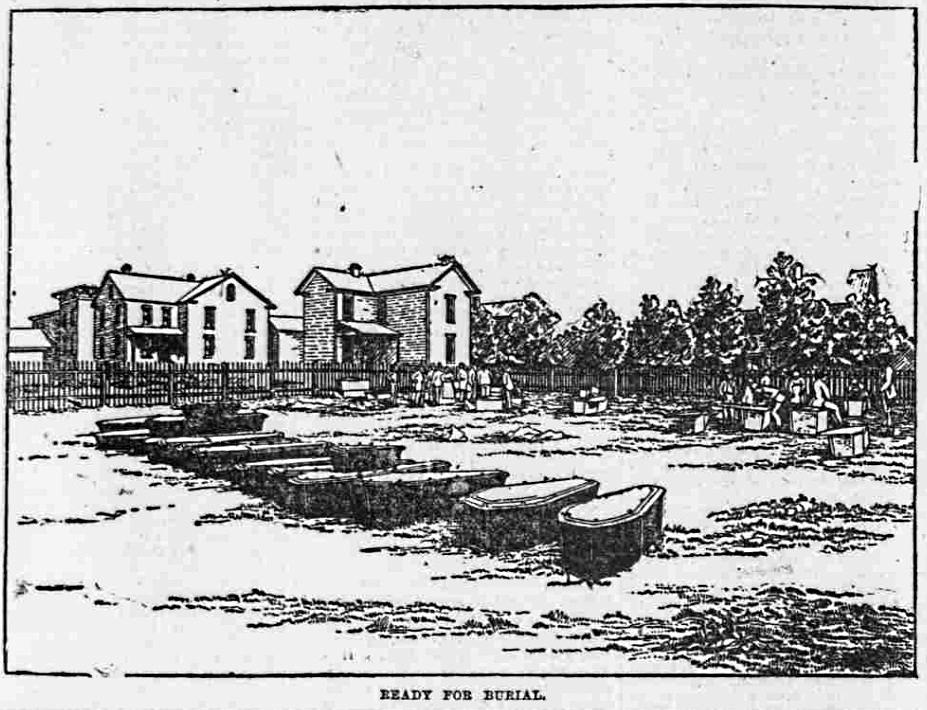On 31 May 1889, unusually heavy rainfall washed out the South Fork dam in western Pennsylvania and released twenty million tons of water from a reservoir known as Lake Conemaugh. A monstrous flood swept through the Little Conemaugh River Valley and made its way towards Johnstown, 14 miles downstream from the dam, destroying everything in its path.
As the water rushed through the valley, it accumulated an enormous amount of debris, which caught fire once it reached Johnstown. Many drowned in the flood as it swept through town while others were killed by the resulting blaze–a staggering 2,209 men, women, and children died.
“With railroad tracks washed away and telegraph lines down, contact with the city was completely cut off,” explains one source, “so most early newspaper editions carried stories based on rumor, conjecture, and the accounts of a few overwrought survivors.” Reports started coming on June 1 and one example of conjecture was the estimated death toll—some reports were low while others were as high as 10,000.
In the days and weeks following the Johnstown flood, newspapers covered the story obsessively. They published details of the moments before, during and after the flood, included sketches of makeshift morgues, destroyed buildings and railroad lines and maps of the water’s course, and provided numerous personal stories of loss and survival. The devastating circumstances of the event made it a national news story with newspapers from as far as California providing reportage.
Because it had so much local and national coverage, Chronicling America is an excellent resource for newspaper accounts of the flood and its aftermath.
The articles and images below are just fraction of what can be found on Chronicling America and they tell the story of the Great Johnstown Flood of 1889.
Coverage from nearby Pittsburgh, Lancaster and Somerset:
Reports in Virginia newspapers:
The Johnstown flood was a national news story—below, coverage in newspapers from Nebraska, New Mexico and California:


































Are these pictures primary sorces?
Yes, since the images came from newspapers published at the time, they would be considered primary sources.